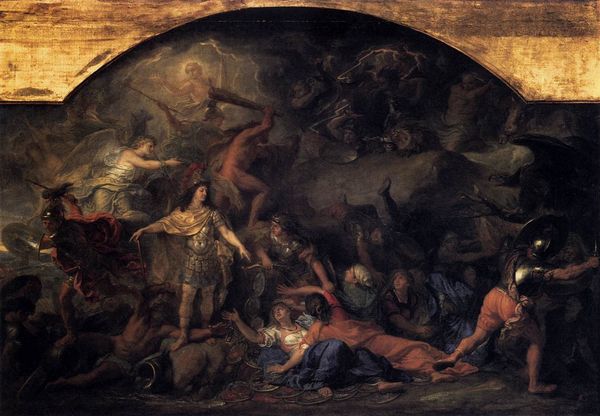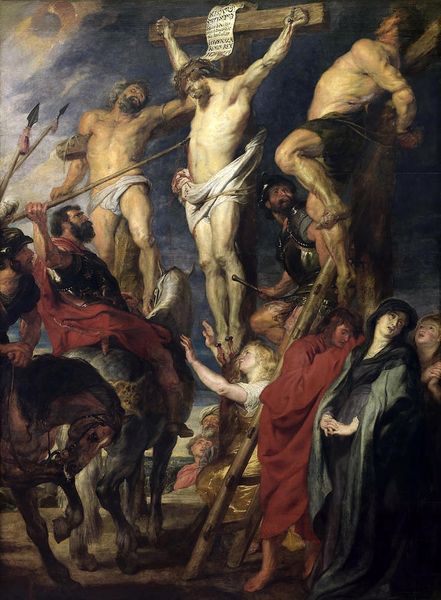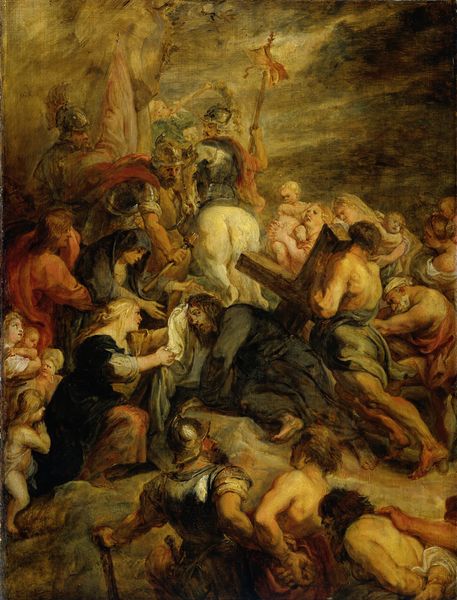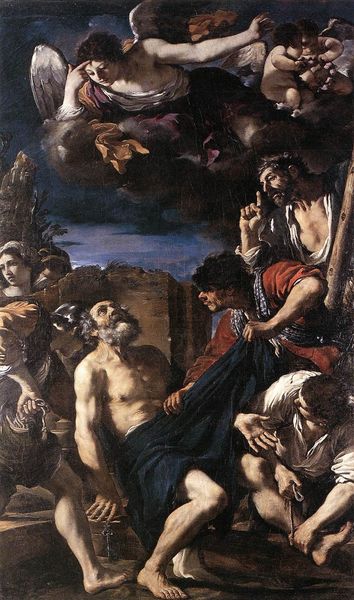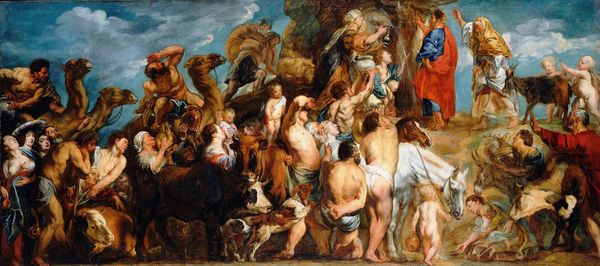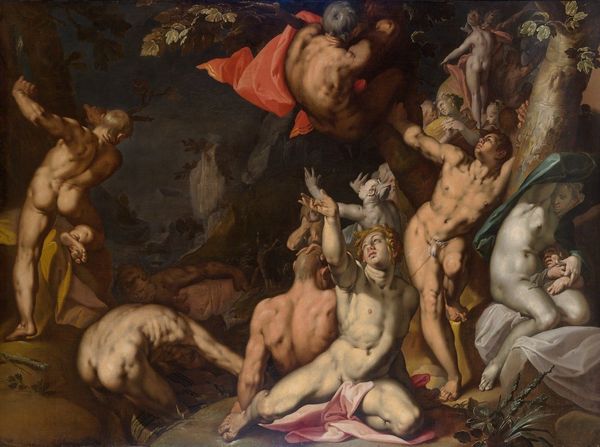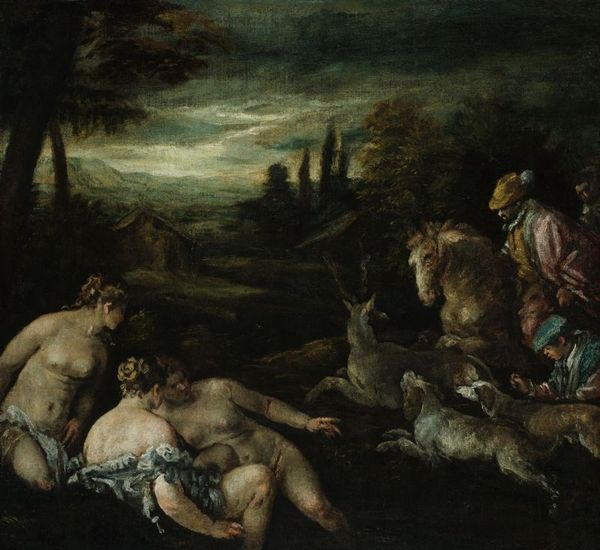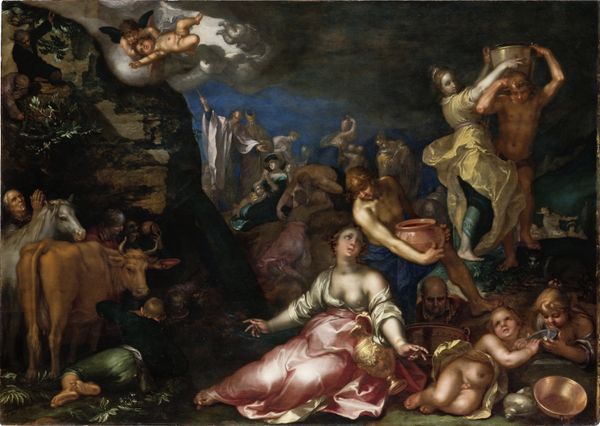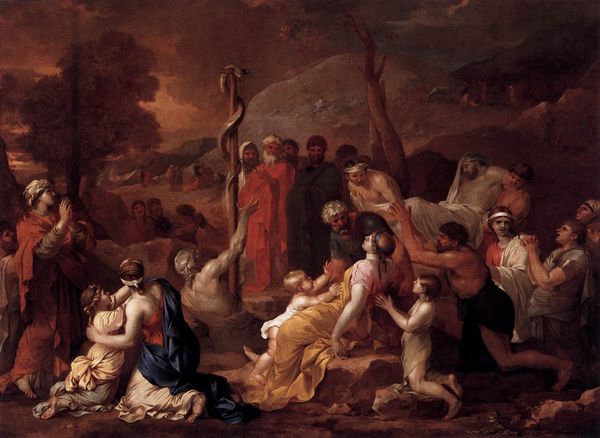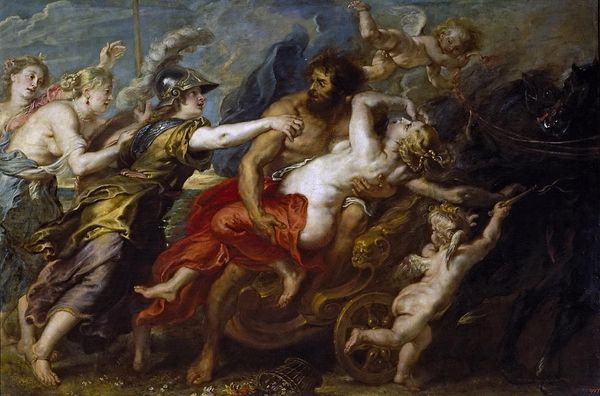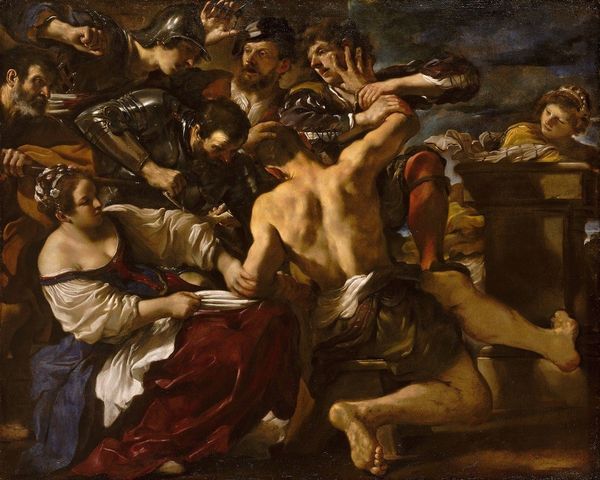
painting, oil-paint
#
baroque
#
painting
#
oil-paint
#
landscape
#
figuration
#
oil painting
#
painterly
#
history-painting
#
realism
Dimensions: 68 x 107 cm
Copyright: Public domain
Editor: This monumental triptych, "The Raising of the Cross" by Peter Paul Rubens from 1610, is an explosion of bodies, light, and emotion. The sheer physicality of the scene, the straining muscles, the chaotic energy… it's overwhelming! How do you interpret this work, beyond the obvious biblical narrative? Curator: I see a complex interplay of tradition and innovation, a visual tapestry woven with threads of cultural memory. Note the use of the triptych form itself; what symbolic weight do you think such a format might carry? Editor: Well, immediately it feels linked to religious iconography. An altarpiece, perhaps? Curator: Precisely! The triptych evokes centuries of religious art, instantly grounding the image in a spiritual context. Now consider the central panel – what draws your eye? Editor: The almost theatrical lighting and the intense musculature of the figures… and the very clear diagonal formed by the cross. Curator: Indeed! Rubens is invoking a very physical, Baroque understanding of faith, steeped in emotional drama. Think of the ways light has been used throughout art history as a symbol. Here, it is divine grace breaking through darkness, revealing the human cost of sacrifice. The cultural memory associated with light tells the story. Does that shift how you perceive the work? Editor: Definitely. I was initially struck by the dynamism, the almost aggressive physicality. But now I see a deeper dialogue between tradition and Rubens' own artistic interpretation, laden with the language of symbolism. Curator: And in that visual dialogue, we gain insight into not only the story of Christ, but also the enduring power of images and the collective cultural experiences embedded in visual language. Editor: I never thought of Rubens as so tied to tradition. Thanks, that gives me a lot to consider!
Comments
No comments
Be the first to comment and join the conversation on the ultimate creative platform.
